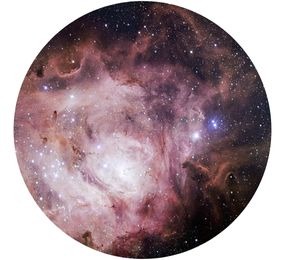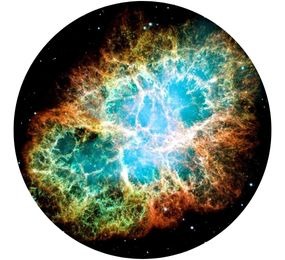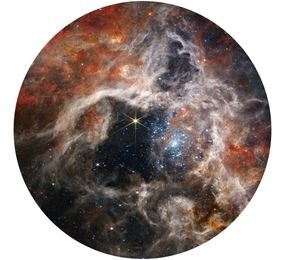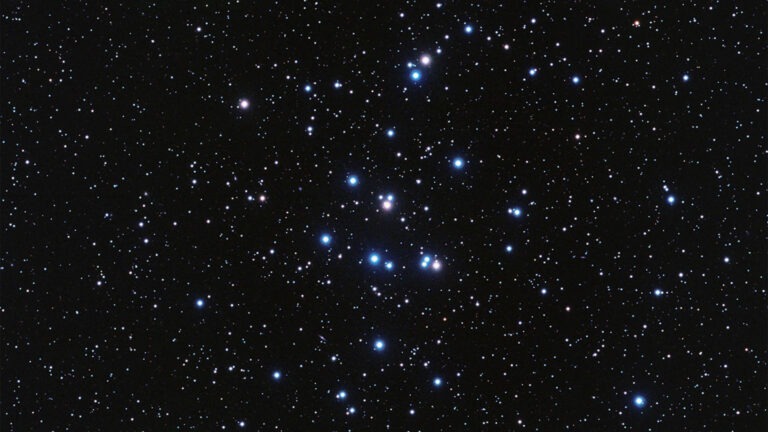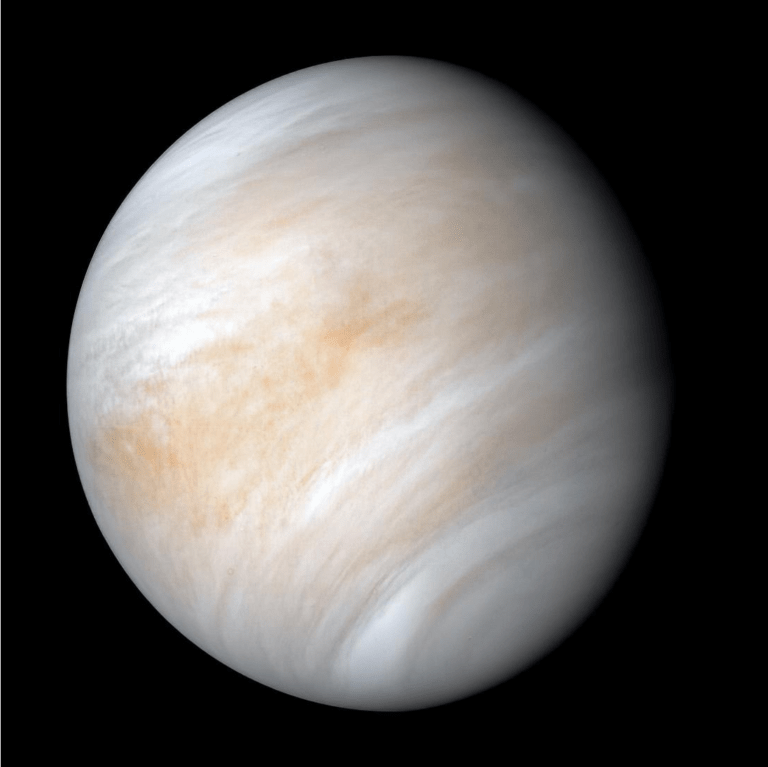Nebulae are often breathtaking and beautiful, and we’re sharing some of our southern sky favourites.
But what are nebulae? If you want the quick answer, most nebulae are clouds of dust and gas in space, formed when a dying star explodes spectacularly in a supernova. There are also other nebulae, that are instead clouds of dust and gas where a star is born.
So, the slightly more complicated answer is that nebulae are the remains of dead stars, apart from when they’re the places where stars form. Read on to learn more about some nebulae visible to stargazers in the Southern Hemisphere’s night sky, and if you have a telescope, take a closer look.
The Lagoon Nebula (also known as the Hourglass Nebula, Messier 8, or M8) rests like a tranquil lake 5,200 light-years from Earth.
This nebula is one of our favourites for stargazing because you can see it with a good pair of binoculars. You can spot the Lagoon Nebula a few degrees above and to the right of the Teapot asterism in the constellation Sagittarius.
Although the nebula is often a pinkish colour in photographs, you’re more likely to see it as faint greyish clouds, about three times larger than the Full Moon.
The Crab Nebula (also known as Messier 1, or M1) is about 6,500 light-years away in the constellation Taurus. This faint nebula lies on a line between Betelgeuse and Capella, roughly a third of the distance from Betelgeuse.
Earthsky.org provides more detailed instructions for finding it in their post Meet the Crab Nebula, remnant of an exploding star.
First observed by Chinese astronomers in 1054, the 18th-century French astronomer Charles Messier mistook the nebula for Halley’s Comet. On realising his mistake, Messier had the idea of creating his now-famous catalogue of celestial objects.
The Tarantula Nebula (also known as NGC 2070, Caldwell 103, or 30 Doradus) is 170,000 light-years away in the Dorado constellation. About 1,000 light-years across, the Tarantula Nebula is a star-forming hot spot and the ESA calls it the “most spectacular feature of the Large Magellanic Cloud”.
You’ll find the Tarantula Nebula on the southern edge of the Large Magellanic Cloud, visible as a bright patch. It’s bright enough that it’s visible to the unaided eye and an even better target for binoculars. Stargazers with a small- to medium-sized telescope are able to see the nebula’s distinctive spider-like structure.
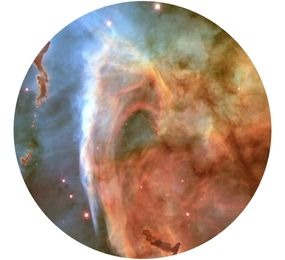
The Eta Carinae Nebula (also known as the Carina Nebula, or NGC 3372) is another bright nebula that stargazers can see with the naked eye.
About 8,000 light-years away in the constellation Carina, the nebula is one of the largest star-forming nebulae in our skies, and great for viewing with binoculars or a telescope in the Southern Hemisphere’s early autumn skies.
Near the centre of the nebula is the Eta Carinae star system, whose largest star is around 100 times as massive as the Sun and about five million times as luminous.
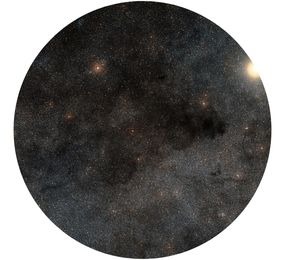
The Coalsack Nebula (also known as Caldwell 99) is a dark nebula. These are dense clouds of interstellar dust that block the light of objects behind them, creating dark, twisting laneways through galaxies.
The nebula obscures part of the Milky Way east of Acrux (Alpha Crucis) in the constellation of Crux, and it forms the head of the Aboriginal constellation the Emu in the Sky (weitj).
The Coalsack Nebula is 600 light-years from Earth and about 100 light-years across. And because it’s a dark nebula, you’ll have no problem seeing it with the naked eye: look for the dark patch through the Milky Way.
Jay Chesters
THE BEST STARGAZING Is iN astrotourism towns
Check out Astrotourism WA’s list of top towns for when you want to get away somewhere under dark skies.

